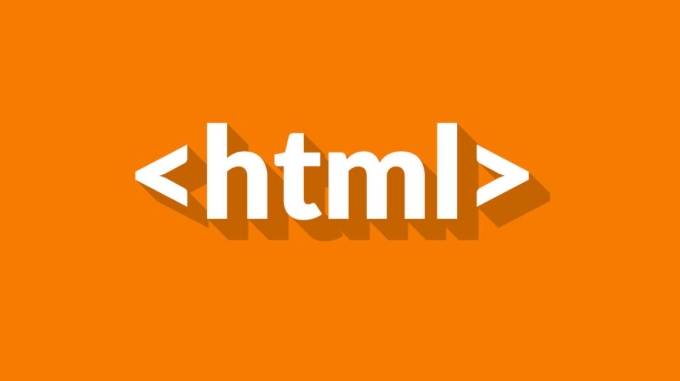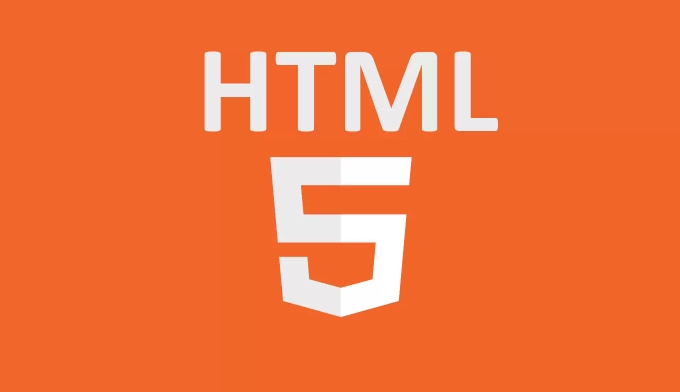What are the most common attributes used with HTML tags?
Jun 30, 2025 am 01:35 AMThe most commonly used and practical properties in HTML development include class, id, href, src, alt, and type. class is used to share styles or behaviors, and an element can have multiple classes; id uniquely identifies a specific element, suitable for anchor links or JS acquisition objects; href is used to specify a hyperlink or stylesheet resource path; src represents the source path of resources such as pictures and scripts; alt provides image alternative text to enhance accessibility and SEO; type defines input types, button behaviors, or script language types, such as text, password, submit, etc. These properties are critical to the functionality, appearance and accessibility of the page, and mastering them helps to develop a well-structured, fully functional web page.

In HTML development, there are some attributes that are frequently used by developers and are indispensable. These attributes not only determine the behavior and appearance of the tag, but also play a key role in the functionality and accessibility of the page. Listed below are some of the most common and practical HTML attributes.

class and id : used for style and script operations
These two properties are mainly used for CSS style control and JavaScript manipulation of DOM elements.

- class : Applicable to multiple elements that share the same style or behavior. An element can have multiple classes.
- id : Uniquely identifies a specific element, often used for anchor links or JS to obtain specific objects.
For example:
<div class="content main" id="section1">This is the content</div>
-
class="content main"means that this div has two class names at the same time; -
id="section1"guarantees that it is unique throughout the document.
Generally speaking, class is more commonly used in front-end development, while id is more suitable for unique identifiers.

href and src : The key to resource reference
These two attributes are used in tags such as <a> and <img src="/static/imghw/default1.png" data-src="image.jpg" class="lazy" alt="What are the most common attributes used with HTML tags?" > , respectively, and are used to specify the location of external resources.
- href : Used for hyperlinks (such as
<a href="https://example.com">) or stylesheet introduction (such as<link rel="stylesheet" href="style.css">). - src : represents the source path of resources such as pictures, scripts, videos, etc., such as
<img src="/static/imghw/default1.png" data-src="image.jpg" class="lazy" alt="What are the most common attributes used with HTML tags?" >or<script src="main.js">.
The difference is:
-
hrefis "I want to jump to" or "I want to load this resource" -
srcis "I need to get data from here to display"
If these two attributes are written incorrectly, the page function will be abnormal or the resource loading fails, so pay special attention to the path writing method.
alt : Alternative text for images to improve accessibility
The alt attribute appears in the <img src="/static/imghw/default1.png" data-src="logo.png" class="lazy" alt="What are the most common attributes used with HTML tags?" > tag to describe the content of the image. This text will be displayed when the image cannot be loaded.
<img src="/static/imghw/default1.png" data-src="logo.png" class="lazy" alt="Company Logo">
Search engines will also read alt text to understand the meaning of the image, so using this attribute is also helpful for SEO.
suggestion:
- The description is clear and concise, avoiding the accumulation of keywords;
- If it is a decorative picture, you can leave
alt=""blank.
type : defines the content type or input format
type appears in various tags, such as:
-
<input type="text">: Define the type of the input box; -
<button type="submit"></button>: defines the behavior of a button; -
<script type="text/javascript"></script>: Define script language types (the default is JS for modern browsers, but it is still recommended to retain them);
Common input types include:
-
text -
password -
email -
checkbox -
radio
Different types of inputs will affect the user input method and browser verification logic.
Basically that's it. Although there are many attributes of HTML, the above are the most basic and commonly used in daily development. Mastering them well will allow you to write web pages with clear structure and complete functions.
The above is the detailed content of What are the most common attributes used with HTML tags?. For more information, please follow other related articles on the PHP Chinese website!

Hot AI Tools

Undress AI Tool
Undress images for free

Undresser.AI Undress
AI-powered app for creating realistic nude photos

AI Clothes Remover
Online AI tool for removing clothes from photos.

Clothoff.io
AI clothes remover

Video Face Swap
Swap faces in any video effortlessly with our completely free AI face swap tool!

Hot Article

Hot Tools

Notepad++7.3.1
Easy-to-use and free code editor

SublimeText3 Chinese version
Chinese version, very easy to use

Zend Studio 13.0.1
Powerful PHP integrated development environment

Dreamweaver CS6
Visual web development tools

SublimeText3 Mac version
God-level code editing software (SublimeText3)

Hot Topics
 Applying Semantic Structure with article, section, and aside in HTML
Jul 05, 2025 am 02:03 AM
Applying Semantic Structure with article, section, and aside in HTML
Jul 05, 2025 am 02:03 AM
The rational use of semantic tags in HTML can improve page structure clarity, accessibility and SEO effects. 1. Used for independent content blocks, such as blog posts or comments, it must be self-contained; 2. Used for classification related content, usually including titles, and is suitable for different modules of the page; 3. Used for auxiliary information related to the main content but not core, such as sidebar recommendations or author profiles. In actual development, labels should be combined and other, avoid excessive nesting, keep the structure simple, and verify the rationality of the structure through developer tools.
 What are the essential HTML elements for structuring a webpage?
Jul 03, 2025 am 02:34 AM
What are the essential HTML elements for structuring a webpage?
Jul 03, 2025 am 02:34 AM
The web page structure needs to be supported by core HTML elements. 1. The overall structure of the page is composed of , , which is the root element, which stores meta information and displays the content; 2. The content organization relies on title (-), paragraph () and block tags (such as ,) to improve organizational structure and SEO; 3. Navigation is implemented through and implemented, commonly used organizations are linked and supplemented with aria-current attribute to enhance accessibility; 4. Form interaction involves , , and , to ensure the complete user input and submission functions. Proper use of these elements can improve page clarity, maintenance and search engine optimization.
 Implementing client-side form validation using HTML attributes.
Jul 03, 2025 am 02:31 AM
Implementing client-side form validation using HTML attributes.
Jul 03, 2025 am 02:31 AM
Client-sideformvalidationcanbedonewithoutJavaScriptbyusingHTMLattributes.1)Userequiredtoenforcemandatoryfields.2)ValidateemailsandURLswithtypeattributeslikeemailorurl,orusepatternwithregexforcustomformats.3)Limitvaluesusingmin,max,minlength,andmaxlen
 What are self-closing tags in HTML?
Jul 02, 2025 pm 02:55 PM
What are self-closing tags in HTML?
Jul 02, 2025 pm 02:55 PM
Self-closing tags are elements in HTML that do not require closed tags because they do not contain content. Common examples include: ① Insert pictures; ② Add line breaks; ③ Create horizontal lines; ④ Define form input; ⑤ Link external resources; ⑥ Provide metadata. These tags work through attributes such as or. There are two correct ways to write: standard HTML syntax, such as XHTML style, but HTML5 recommends the former. Note that you cannot use self-closed form on labels that require the package content. If the error is wrong, it should be changed to a correctly closed Hello. Proper use of self-closing tags helps keep your code simple and efficient, and improves compatibility with other tools such as frameworks.
 Implementing Clickable Buttons Using the HTML button Element
Jul 07, 2025 am 02:31 AM
Implementing Clickable Buttons Using the HTML button Element
Jul 07, 2025 am 02:31 AM
To use HTML button elements to achieve clickable buttons, you must first master its basic usage and common precautions. 1. Create buttons with tags and define behaviors through type attributes (such as button, submit, reset), which is submitted by default; 2. Add interactive functions through JavaScript, which can be written inline or bind event listeners through ID to improve maintenance; 3. Use CSS to customize styles, including background color, border, rounded corners and hover/active status effects to enhance user experience; 4. Pay attention to common problems: make sure that the disabled attribute is not enabled, JS events are correctly bound, layout occlusion, and use the help of developer tools to troubleshoot exceptions. Master this
 How to group options within a select dropdown using html?
Jul 04, 2025 am 03:16 AM
How to group options within a select dropdown using html?
Jul 04, 2025 am 03:16 AM
Use tags in HTML to group options in the drop-down menu. The specific method is to wrap a group of elements and define the group name through the label attribute, such as: 1. Contains options such as apples, bananas, oranges, etc.; 2. Contains options such as carrots, broccoli, etc.; 3. Each is an independent group, and the options within the group are automatically indented. Notes include: ① No nesting is supported; ② The entire group can be disabled through the disabled attribute; ③ The style is restricted and needs to be beautified in combination with CSS or third-party libraries; plug-ins such as Select2 can be used to enhance functions.
 Configuring Document Metadata Within the HTML head Element
Jul 09, 2025 am 02:30 AM
Configuring Document Metadata Within the HTML head Element
Jul 09, 2025 am 02:30 AM
Metadata in HTMLhead is crucial for SEO, social sharing, and browser behavior. 1. Set the page title and description, use and keep it concise and unique; 2. Add OpenGraph and Twitter card information to optimize social sharing effects, pay attention to the image size and use debugging tools to test; 3. Define the character set and viewport settings to ensure multi-language support is adapted to the mobile terminal; 4. Optional tags such as author copyright, robots control and canonical prevent duplicate content should also be configured reasonably.
 Adding captions and tracks to HTML video and audio elements.
Jul 02, 2025 pm 04:05 PM
Adding captions and tracks to HTML video and audio elements.
Jul 02, 2025 pm 04:05 PM
To embed video or audio with subtitles and audio tracks into a web page, it can be achieved through HTML native functionality. 1. Use tags to add subtitles files in WebVTT format and set the kind, srclang and label attributes; 2. Support multi-language subtitles through multiple elements, and use the default attribute to set the default language; 3. Multi-tracks can control multiple element switching through JavaScript, or use more complex media extension solutions; 4. Pay attention to browser compatibility, path configuration and format verification to ensure normal operation on different devices and provide backup solutions.






